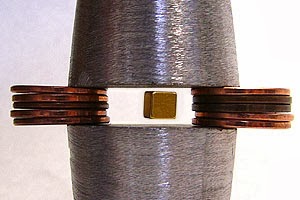Magnetic Levitation
Magnetic Levitation
Magnetic Levitation is a process of suspending a body in air without
any support. This is done with the help of magnetic field. In this process the
object being levitated doesn’t touch the base as gravitational force and other
types of external forces are overcome by magnetic repulsion.
Though this seems fascinating, but it is really difficult to stabilize
the levitation so that it can be used for practical applications. Since we need
to regulate the movement of the suspended body in all six axes i.e. 3 spatial
and 3 rotational, for this at least 1 stable axis must be present to support
the levitation of other axes.
For stable levitation attractive magnetic field may also be used to
stabilize one axis. We also have an option of pseudo levitation in which, the
object is supported by both, magnetic field as well as mechanical support. This
helps in reducing friction due to the surface contact of the support and object
being levitated.
We can see a very wide use of magnetic levitation in the super fast
maglev trains in many countries now a days. Many types of magnetic bearings are also made, using
this method
If this process is used in an evacuated tunnel then it is assumed to
have the potential to achieve an enormous speed of approx. 6400 km/hr and if
used in open, then most of the propulsion force is employed in overcoming air
drag so the speed to be achieved is lowered a lot and we have the examples of
the maglev trains which made a record of reaching a top speed of over 580 km/hr.
Credits: Image Source- Google Images




.jpg)
Comments
Post a Comment